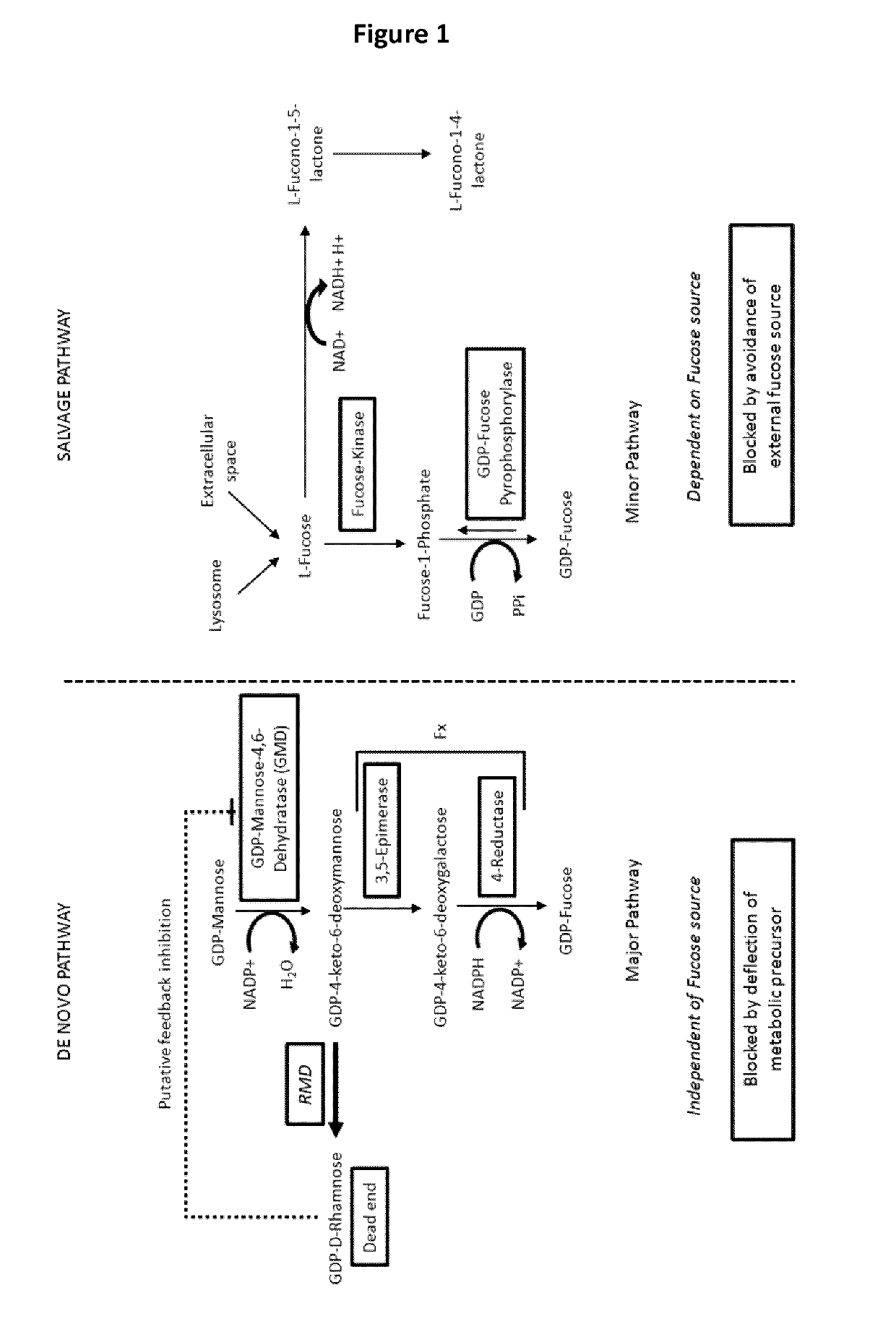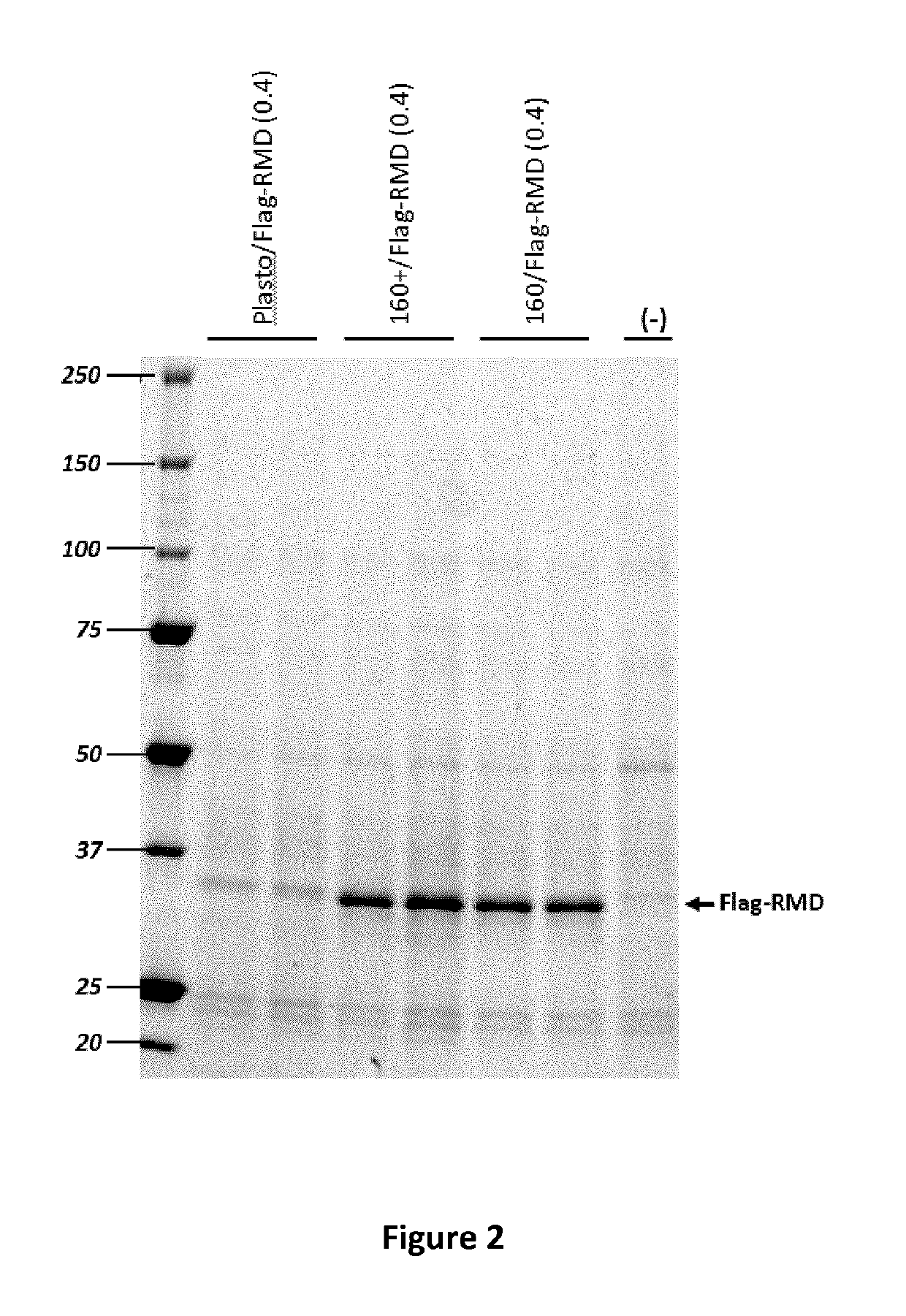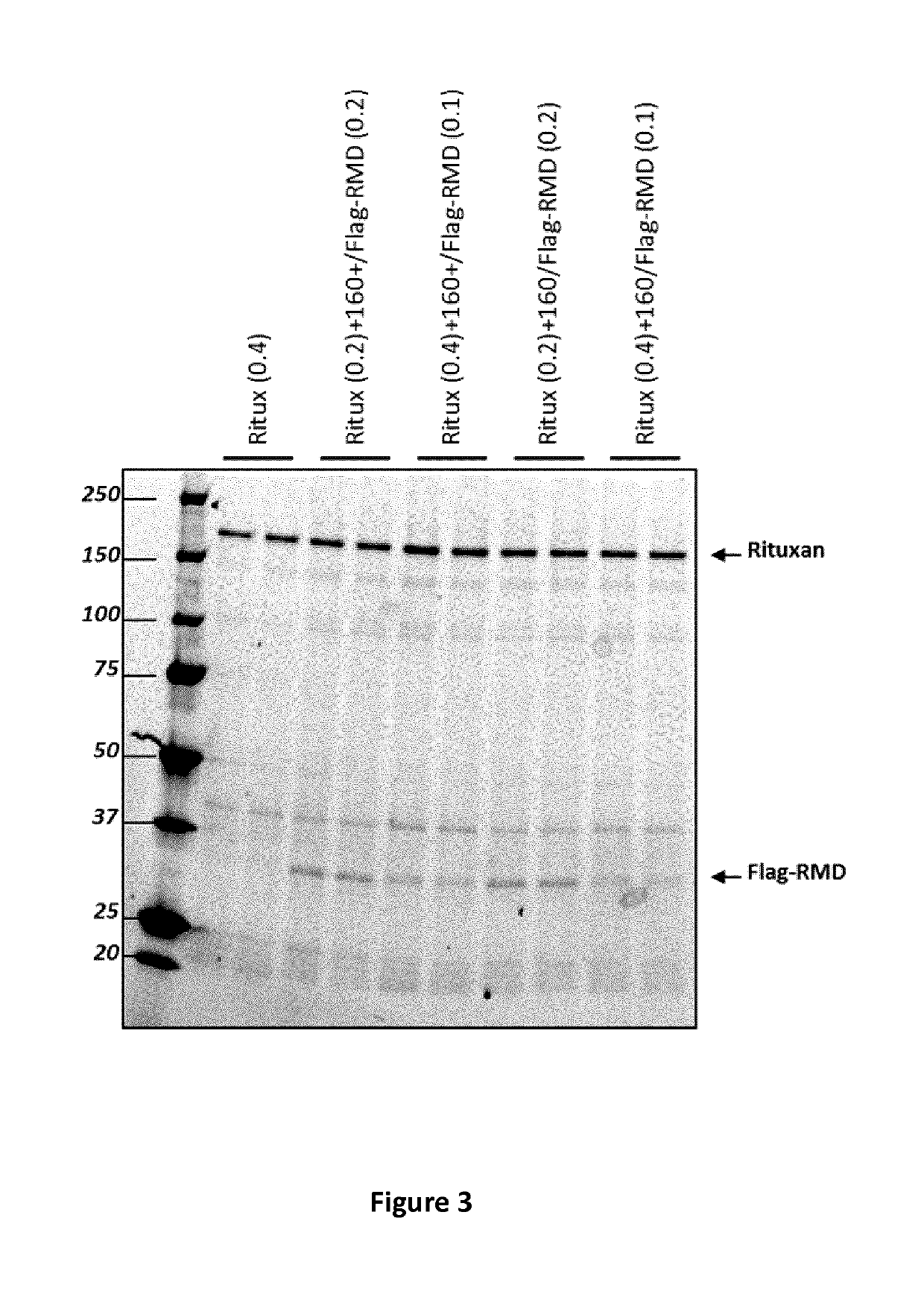Modifying n-glycosylation of plant proteins using gdp-4-dehydro-6-deoxy-d-mannose reductase (RMD)
- Summary
- Abstract
- Description
- Claims
- Application Information
AI Technical Summary
Benefits of technology
Problems solved by technology
Method used
Image
Examples
example 2
Flag-RMD or RMD Co-Expression on Rituximab Fucosylation in Wild-Type Plants
[0154]The effect of the co-expression of Flag-RMD on rituximab fucosylation on antibody N-glycans was assessed by western blot analysis using anti-fucose. After detection by the anti-fucose, membranes were dehybridized and reprobed with anti-IgG1 for normalization of IgG loads quantity.
[0155]FIG. 4 presents the anti-fucose (upper panel) and anti-IgG1 (lower panel) western blot analysis of crude extract from N. benthamiana plants agroinfiltrated with rituximab monoclonal antibody (construct 5072) at an OD600 of 0.2 or 0.4 (the amount of bacterial vector supplied to the plant during agroinfiltration) and co-infiltrated with construct 5091 or 5092 at an OD600 of 0.1 or 0.2. As seen in FIG. 4, no reduction of rituximab fucosylation is observed when Flag-RMD was co-expressed with rituximab. The concentration of Flag-RMD (i.e. OD600 amount of bacterial vector used for agroinfiltration) or expression system (CPMV 16...
example 3
RMD Co-Expression on Rituximab Glycan Profile (Fucosylation) in Wild-Type Plants and in Fuct / XylT Knockout Plants
Glycan Profile—Wild-Type Plants
[0161]The rituximab antibody (construct 5072) was transiently expressed in wild-type Nicotiana benthamiana plants with and without the co-expression of 160+ / RMD (construct 5093; paRMD) or 160 / RMD (construct 5094; paRMD) and purified as described above in example 2. N-Glycan profiling and analysis of glycopeptides of the purified antibodies was characterized using MS (LC ESI MS / MS; as described in Li et. al. (2015, Plt. Biotech. J., pp. 1-10). The N-glycosylation profile on a unique site (N301) of purified rituximab antibodies was compared to that of wild-type plants. The results are presented in Table 5, below.
TABLE 5Comparison of N-glycan profile of the purified rituximab antibody produced in wild-type plants, with and without co-expression of paRMDunder the control of CPMV 160+ or CPMV 160 expression system. Bacterial vector comprising rit...
example 4
n of atRMD, pbRMD, psRMD and xvRMD in Plants
[0170]The expression of GDP-4-dehydro-6-deoxy-D-mannose reductase from Agrobacterium tumefaciens (atRMD) under the control of CPMV 160 (160 / atRMD, construct no 3431), from Pseudomonas brassicacearum (pbRMD) under the control of CPMV 160 (160 / pbRMD; construct no 3432), from Pseudomonas syringae (psRMD) under the control of CPMV 160 (160 / psRMD, construct no 3433) and from Xanthomonas vasicola (xvRMD) under the control of CPMV 160 (160 / xvRMD, construct no 3434) in N. benthamiana was first tested by agroinfiltration. FIG. 7 presents the crude extract analysis by coomassie-stained SDS-PAGE of N. benthamiana plants agroinfiltrated with construct 3431, 3432, 3433, 3434 or 5094 at an OD600 of 0.4 and expressing only the atRMD, pbRMD, psRMD, xvRMD or paRMD. As shown in FIG. 7, a band can be seen at the expected molecular weight of the atRMD (35.7 kDa), pbRMD (33.7 kDa) and paRMD (34.9 kDa) but not for psRMD (35.1 kDa) and xvRMD (33.4 kDa). However,...
PUM
| Property | Measurement | Unit |
|---|---|---|
| Mass | aaaaa | aaaaa |
| Mass | aaaaa | aaaaa |
| Fraction | aaaaa | aaaaa |
Abstract
Description
Claims
Application Information
 Login to View More
Login to View More - Generate Ideas
- Intellectual Property
- Life Sciences
- Materials
- Tech Scout
- Unparalleled Data Quality
- Higher Quality Content
- 60% Fewer Hallucinations
Browse by: Latest US Patents, China's latest patents, Technical Efficacy Thesaurus, Application Domain, Technology Topic, Popular Technical Reports.
© 2025 PatSnap. All rights reserved.Legal|Privacy policy|Modern Slavery Act Transparency Statement|Sitemap|About US| Contact US: help@patsnap.com



